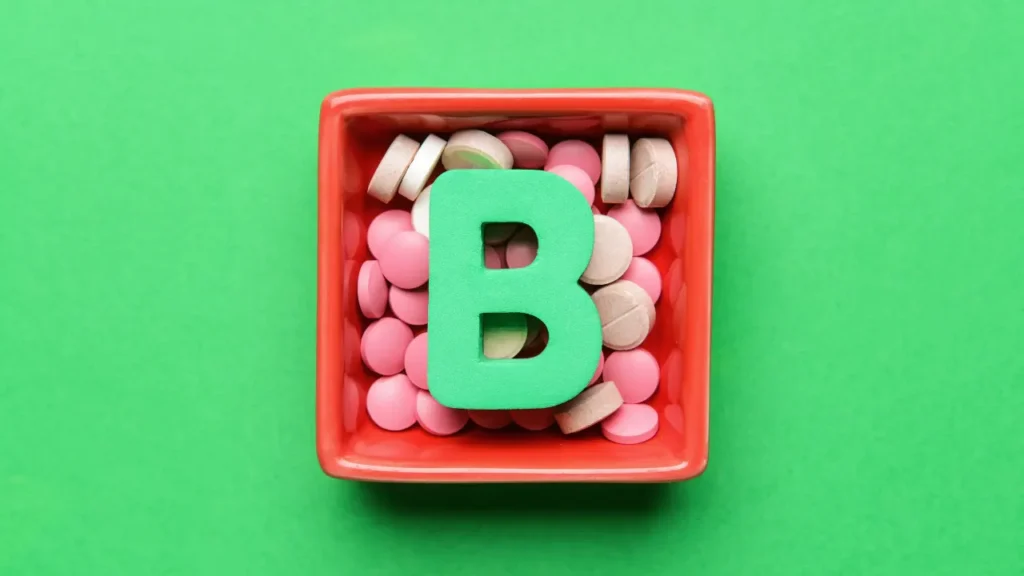Beer is a fermented beverage created from different cereal grains, water, hops, and yeast. It is one of the oldest and most popular alcoholic drinks in the world. For thousands of years, its use has been an essential component of human civilization, and many people still favor it as a beverage. The goal of this article is to examine the chemistry of beer, its health advantages, potential hazards, ideal dosages, and responsible consumption habits.
You May Also Like:
Dr Emil Nutrition Lion’s Mane Reviewed: A Leading Nootropic Mushroom Product
Beer: Benefits, Dosage, Side Effects, Drug Interactions, And Other Important Information is an original (NootropicsPlanet) article.
Nature of Beer
In order to comprehend the nature of beer, it is important to examine its essential elements, manufacturing procedure, and sensory qualities. The interaction of the ingredients and the brewing process produces a vast variety of flavors, smells, and styles in beer, making it a complex and varied beverage.
Beer’s primary ingredients are water, malted cereal grains (often barley), hops, and yeast, as was previously established. The macronutrients (carbohydrates, proteins, and fats) and micronutrients (vitamins and minerals) in beer can be further divided down. Maltose, which is produced when the starches in the grains are broken down during the mashing process, is the main carbohydrate found in beer. Beer’s protein sources are its grains and yeast, while its typical low fat content. Beer includes different bioactive substances, such as polyphenols, in addition to macronutrients and micronutrients, which adds to its health advantages.
Health Benefits of Beer
Reduced risk of cardiovascular disease, type 2 diabetes, and some cancers are just a few of the health advantages of moderate beer drinking. Beer contains a number of different substances, including polyphenols, vitamins, and minerals, that are responsible for these health advantages.
Beer contains naturally occurring substances called polyphenols, including flavonoids and phenolic acids, that have anti-inflammatory, anti-carcinogenic, and antioxidant activities. They can aid in lowering oxidative stress and inflammation, thereby defending against chronic illnesses including cancer and cardiovascular disease.
Because beer contains yeast and grains, it contains B vitamins such B1 (thiamine), B2 (riboflavin), B3 (niacin), B6 (pyridoxine), and B9 (folic acid). These vitamins are crucial for many biological processes, including the creation of red blood cells, the maintenance of healthy skin, and the production of energy.
In addition, beer contains important minerals like potassium, magnesium, and selenium that support healthy muscle function, electrolyte balance, and overall wellbeing.

Chemistry of Beer
Beer is made by a multi-step process that includes malting, mashing, boiling, fermentation, and conditioning. The four primary components of beer—water, malted cereal grains (such barley), hops, and yeast—are at the foundation of its chemistry.
The final flavor and quality of the brew are greatly influenced by the water, which comprises up 90–95% of beer. Enzyme activity, pH levels, and yeast fermentation are just a few of the components of beer production that can be impacted by the mineral composition of the water.
The main source of the carbs, proteins, and enzymes needed for brewing is malted cereal grains. Although other grains like wheat, corn, and rice can also be used, barley is the grain that is most frequently utilized in the making of beer. Grain is soaked in water and allowed to germinate during the malting process, which activates enzymes that transform starches into fermentable sugars and proteins into amino acids.
Hops are generally used in beer for their bittering, flavouring, and fragrance capabilities. Hops are produced from the female flowers of the hop plant (Humulus lupulus). They include alpha and beta acids, which respectively add bitterness and fragrance to the beer. Additionally, hops offer organic preservatives that contribute to a longer shelf life for beer.
The grains’ extracted sugars are fermented by yeast, a single-celled microbe, creating alcohol and carbon dioxide. Ale yeasts (Saccharomyces cerevisiae) and lager yeasts (Saccharomyces pastorianus), which ferment at various temperatures and generate diverse flavour profiles, are the two primary groups of yeast strains.
Physiological Mechanisms of Action of Beer
Beer’s physiological effects on the body and brain are caused by a variety of physiological processes, including both direct effects of alcohol (ethanol) and indirect effects of other bioactive substances found in beer. Here, we go over the main physiological mechanisms at work when drinking beer:
- Alcohol metabolism: When ingested, alcohol is quickly absorbed into the bloodstream from the stomach and small intestine. Alcohol is metabolized mostly in the liver, where enzymes like alcohol dehydrogenase (ADH) and aldehyde dehydrogenase (ALDH) convert it to acetaldehyde and eventually acetate. Acetate is further broken down into carbon dioxide and water, which the body expel. Individual differences in alcohol metabolism can be caused by a variety of variables, including sex, heredity, and liver health.
- Vasodilation: Alcohol has a vasodilator effect, which makes blood vessels enlarge and boosts blood flow. This impact could contribute to the feeling of warmth that follows drinking alcohol and could help to explain why moderate beer consumption is connected with a lower risk of cardiovascular disease. On the other hand, excessive alcohol use might raise blood pressure, negating any potential cardiovascular advantages.
- Neurotransmission: Gamma-aminobutyric acid (GABA), glutamate, dopamine, and serotonin are just a few of the neurotransmitter systems that alcohol has an impact on in the brain. Alcohol increases GABA’s inhibitory effects, which causes sleepiness, reduced anxiety, and poor motor coordination. Alcohol also reduces glutamate’s ability to excite the brain, which adds to its depressive effects on the central nervous system. Additionally, alcohol boosts dopamine release in the reward circuits of the brain, producing pleasurable feelings and encouraging consumption.
- Hormonal effects: Alcohol can influence the release of hormones like cortisol, testosterone, and estrogen by interfering with the endocrine system. For instance, men who drink heavily on a regular basis may have lower levels of testosterone, which can affect their ability to conceive and cause other health issues such as diminished muscle mass.
- Polyphenol activity: Beer contains a lot of polyphenols, which have anti-inflammatory, anti-carcinogenic, and antioxidant characteristics. By scavenging reactive oxygen species (ROS) and lowering oxidative stress, polyphenols can prevent cellular damage and lower the risk of chronic diseases including cancer and cardiovascular disease.


Optimal Dosage and Responsible Consumption
Depending on variables including age, sex, and personal health state, the ideal beer dose for health benefits and safe drinking varies. In general, moderate alcohol consumption is seen as no more than one drink for women and no more than two for men each day. A normal serving of alcohol equals 12 ounces (355 ml) of beer with an alcohol content of about 5% (ABV).
It’s crucial to remember that because everyone’s tolerance for alcohol differs, these recommendations may not be appropriate to everyone. Some people should never drink alcohol, including pregnant women, anyone with a history of alcoholism or liver illness, and people taking specific drugs.
Side Effects and Potential Substance Interactions
Excessive beer intake can result in numerous harmful health effects, such as:
- Alcohol intoxication: Excessive alcohol consumption can lead to impairments in judgement, coordination, and reaction time, which raises the possibility of accidents and injuries.
- Weight gain: Because beer is high in calories, overindulging in it can lead to weight gain and obesity.
- Liver damage: Prolonged heavy drinking can cause cirrhosis, fatty liver, and alcoholic hepatitis.
- Cardiovascular risks: Binge drinking raises the possibility of heart disease, stroke, and hypertension.
- Alcohol dependence: Regularly “binging” on alcohol can result in addiction and withdrawal symptoms when intake is cut back or halted. Additionally, alcohol and a number of drugs can interact negatively or less effectively, resulting in side effects. The following are a few typical drugs and alcohol that may interact:
- Antidepressants: Drinking alcohol while taking an antidepressant increases the likelihood of feeling sleepy, lightheaded, and having cognitive function hindered. Alcohol may intensify the sedative effects of antihistamines, increasing sleepiness and decreasing alertness.
- Painkillers: Combining alcohol with painkillers increases the risk of gastrointestinal problems like bleeding in the stomach and liver damage.
- Sleep aids: Mixing alcohol with sedatives such benzodiazepines or zolpidem can intensify their sedative effects, increasing drowsiness, impairing motor function, and raising the danger of overdose.
- Diabetes medications: Alcohol can affect how well people with diabetes manage their blood sugar, increasing their risk of developing hypoglycemia (low blood sugar) or hyperglycemia (high blood sugar).
To ensure safe and responsible consumption while taking any drugs, it is imperative to speak with a healthcare provider before considering consuming beer or other alcoholic beverages.


Best Responsible Use of Beer
Adopting safe consumption habits is crucial to maximizing the health benefits and minimizing the potential dangers related to beer intake. Here are some pointers for using beer responsibly:
- Adhere to the advice given: Respect the daily alcohol intake recommendations of no more than one drink for women and two for men, keeping in mind that each person may have a different tolerance.
- Refrain from binge drinking: Large amounts of alcohol consumed quickly might cause acute intoxication and raise the possibility of long-term health issues. To lessen these dangers, space out your beverages and refrain from “binging”.
- Drink beer with food: Beer consumption with food can slow down the bloodstream’s absorption of alcohol, lowering the risk of intoxication and peak blood alcohol concentration.
- Maintain hydration: Water can help counteract beer’s diuretic effects and lower the risk of dehydration.
- Avoid drinking and driving: Alcohol affects coordination, reaction time, and judgment, which increases the risk of accidents. If you intend to drink, always designate a driver or use another mode of transportation.
- Know your limitations: Modify your consumption in accordance with your personal tolerance for alcohol. Age, sex, physical size, and genetic factors can all impact how the body processes alcohol and how tolerable it is.
Individuals can take advantage of beer’s social and health benefits while reducing risks and negative consequences by following these guidelines for safe beer drinking.
Beer:
Conclusion
Beer, one of the oldest and most cherished alcoholic beverages, offers a complex and varied profile of flavors, smells, and styles due to its intricate chemistry. Exploring the health benefits reveals that moderate consumption of beer, rich in polyphenols, vitamins, and minerals, may reduce the risk of cardiovascular diseases, type 2 diabetes, and certain cancers.
Understanding the physiological mechanisms at play, including alcohol metabolism, vasodilation, neurotransmission, hormonal effects, and polyphenol activity, provides insights into how beer affects the body and brain.
However, responsible consumption is undoubtedly crucial when it comes to beer, with optimal dosage recommendations varying based on individual factors, and awareness of potential side effects and substance interactions essential for safe enjoyment. Embracing these guidelines ensures that individuals can savor the social and health benefits of beer while minimizing risks and negative consequences associated with its consumption.


References:
- Drink Alcohol Only in Moderation. Retrieved from: https://health.gov/myhealthfinder/health-conditions/heart-health/drink-alcohol-only-moderation#:~:text=For%20men%2C%20try%20not%20to,your%20health%20than%20drinking%20more.
- Moderate alcohol consumption and health: A review on major chronic diseases. Retrieved from: https://onlinelibrary.wiley.com/doi/full/10.1111/j.1530-0277.2002.tb02622.x
- What Is Moderate Drinking?. Retrieved from: https://www.ncbi.nlm.nih.gov/pmc/articles/PMC6761695/#:~:text=Moderation%20is%20defined%20as%20no,oz%2080%2Dproof%20distilled%20spirits.
Important Note: The information contained in this article is for general informational purposes only, and should not be construed as health or medical advice, nor is it intended to diagnose, prevent, treat, or cure any disease or health condition. Before embarking on any diet, fitness regimen, or program of nutritional supplementation, it is advisable to consult your healthcare professional in order to determine its safety and probable efficacy in terms of your individual state of health.
Regarding Nutritional Supplements Or Other Non-Prescription Health Products: If any nutritional supplements or other non-prescription health products are mentioned in the foregoing article, any claims or statements made about them have not been evaluated by the U.S. Food and Drug Administration, and such nutritional supplements or other health products are not intended to diagnose, treat, cure, or prevent any disease.
